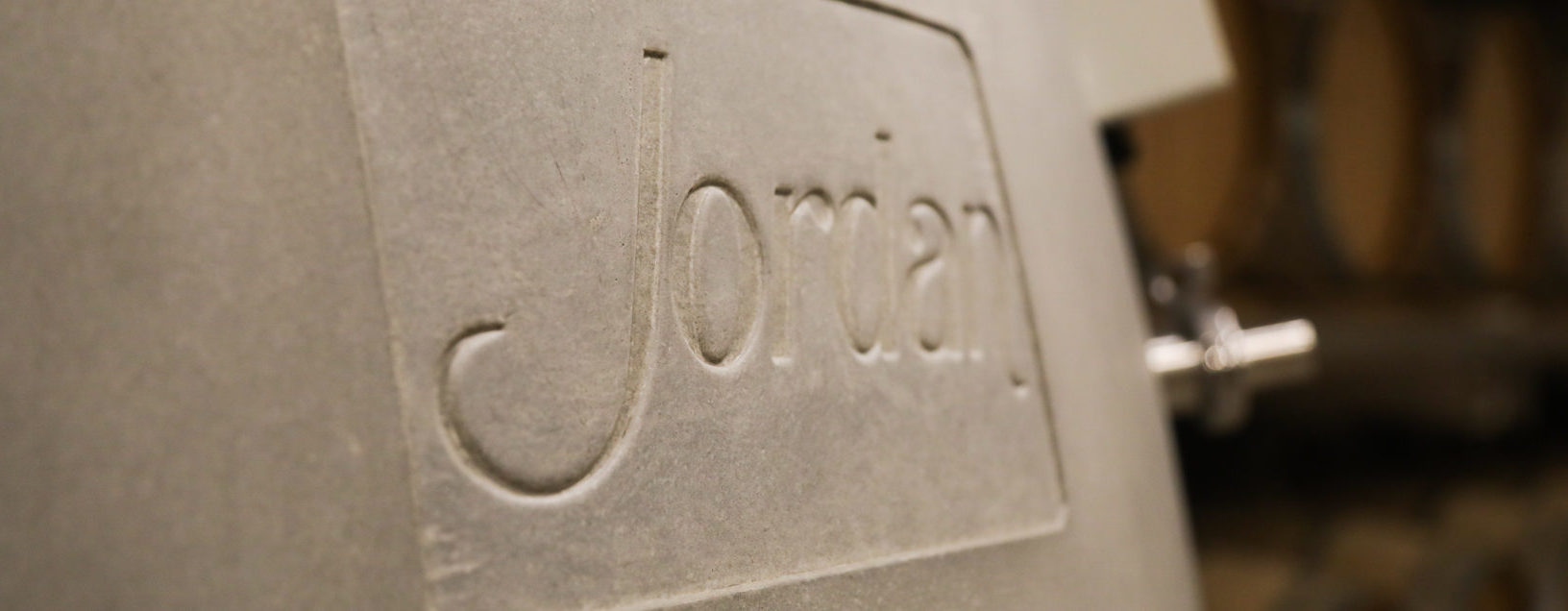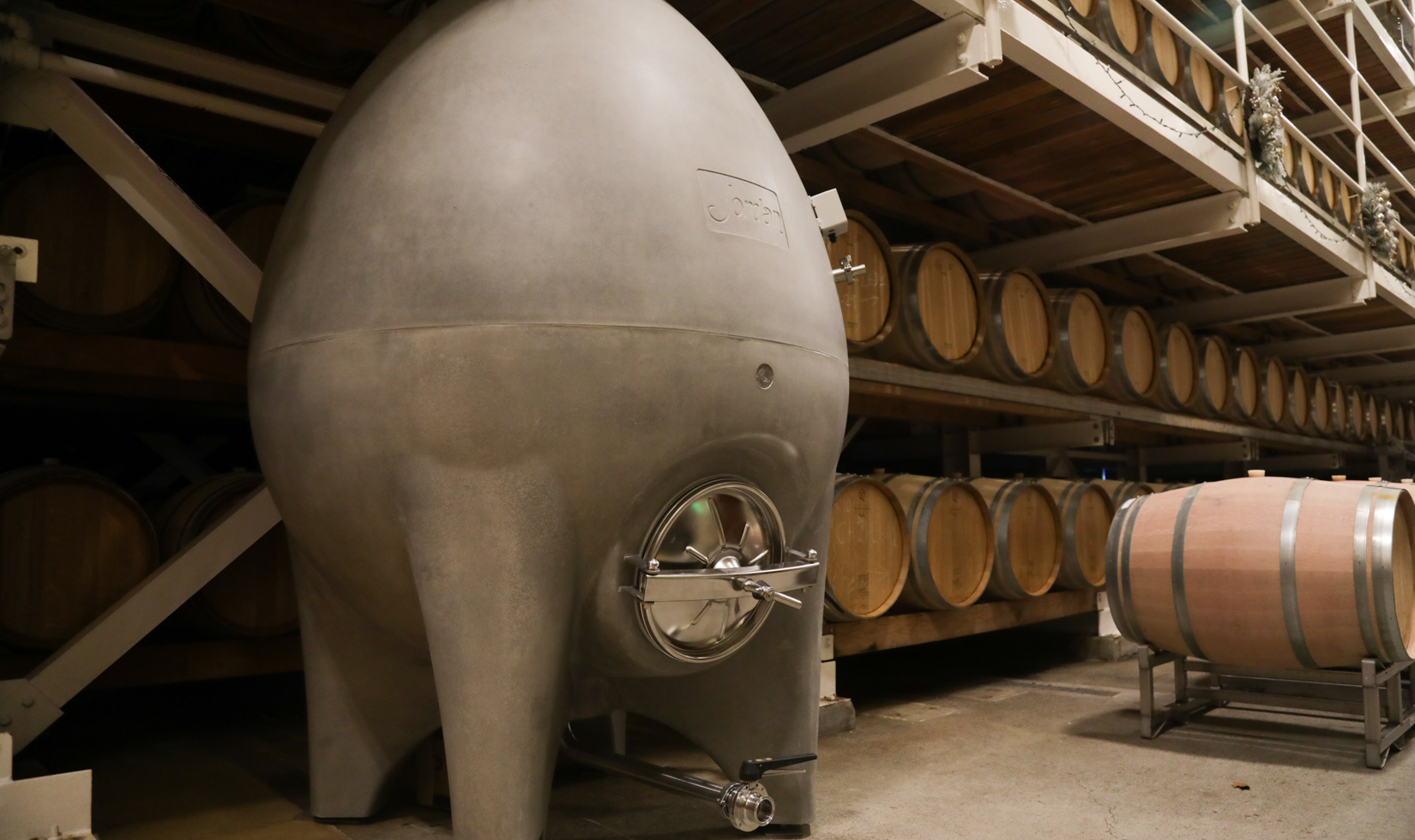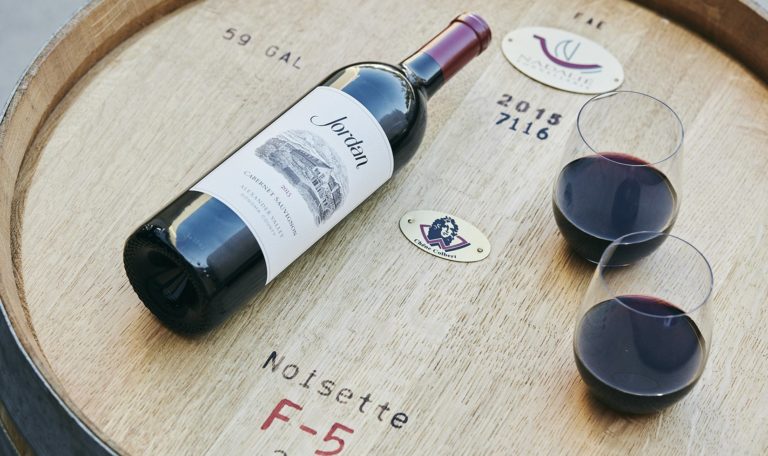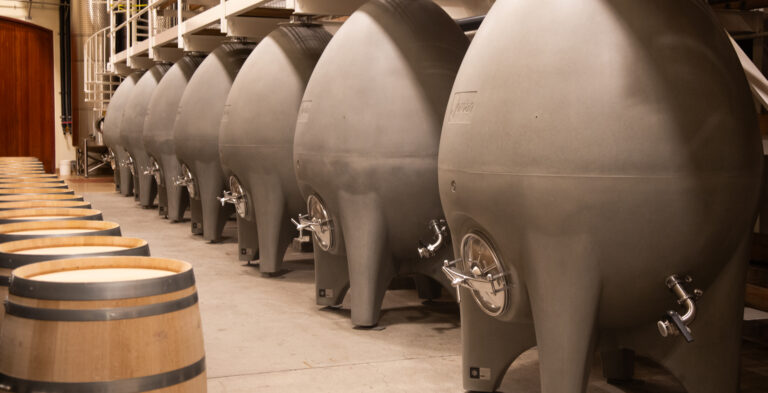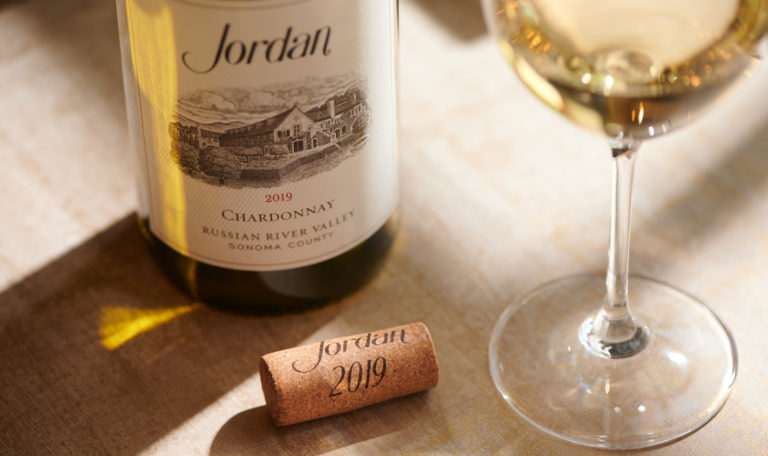At Jordan, we pride ourselves on consistency—consistency in our wines, food affinity and hospitality. Although we only make two wines, one singular chardonnay and cabernet sauvignon, John Jordan tasks our winemaking team every year to improve quality without losing the Jordan style.
In the cellar, there are only a few ways left to experiment with raising Jordan Chardonnay quality, as we have already invested in a new press in 2020 and a state-of-the-art bottling line in 2013. We also switched to only aging part of the wine in all-new French oak barrels beginning in 2014 and changed Jordan Chardonnay closures to the Origine by DIAM cork in 2019. Adding other fermentation and aging vessels to complement French oak is the primary tool that we have available to take this beautiful wine to the next level. And for chardonnay that vessel is the concrete egg.
Last summer, John approved the purchase of one 476-gallon concrete egg fermenter made by a local purveyor, Sonoma Cast Stone, who made its first concrete egg for a winemaker friend 15 years ago—and now egg fermenters account for 40 percent of a business that started out making concrete countertops and sinks. The 2021 vintage will be the first year that our winemaking team will be experimenting with concrete aging—and we plan to purchase seven more concrete eggs so that our entire production can be partially fermented in these amazing vessels beginning in 2022.
Here are three reasons why Maggie is excited to utilize the concrete egg in our chardonnay program:
1. It’s the optimal shape for fermentation
During fermentation, the round egg shape allows for continual mixing (due to the release of carbon dioxide and heat released during fermentation) allowing the lees or yeast solids to stay in solution and naturally increase the wine’s richness and roundness.
2. It will enhance the mouthfeel
While stainless steel tanks are very easy to sanitize and are great for fermentation, they don’t allow wine to breathe and mature. Concrete, like oak, is a porous material so the wine can get small doses of oxygen to evolve and age. This exposure to minimal levels of oxygen helps the wine age gradually and improve the overall mouthfeel, without overpowering the fruit.
3. It will preserve the delicacy of the fruit
Concrete will also bring out the minerality and wet stone characteristics—elements that are essential to maintaining Jordan’s house style. While we love oak as a tool it can be overpowering to some of these more subtle and beautiful new vineyard blocks of fruit we are sourcing from west Russian River Valley. But concrete will help this delicate wine shine even brighter, by elevating the fruit, enhancing its natural aromas, and allowing for gradual oxygenation and thus more seamless aging.
